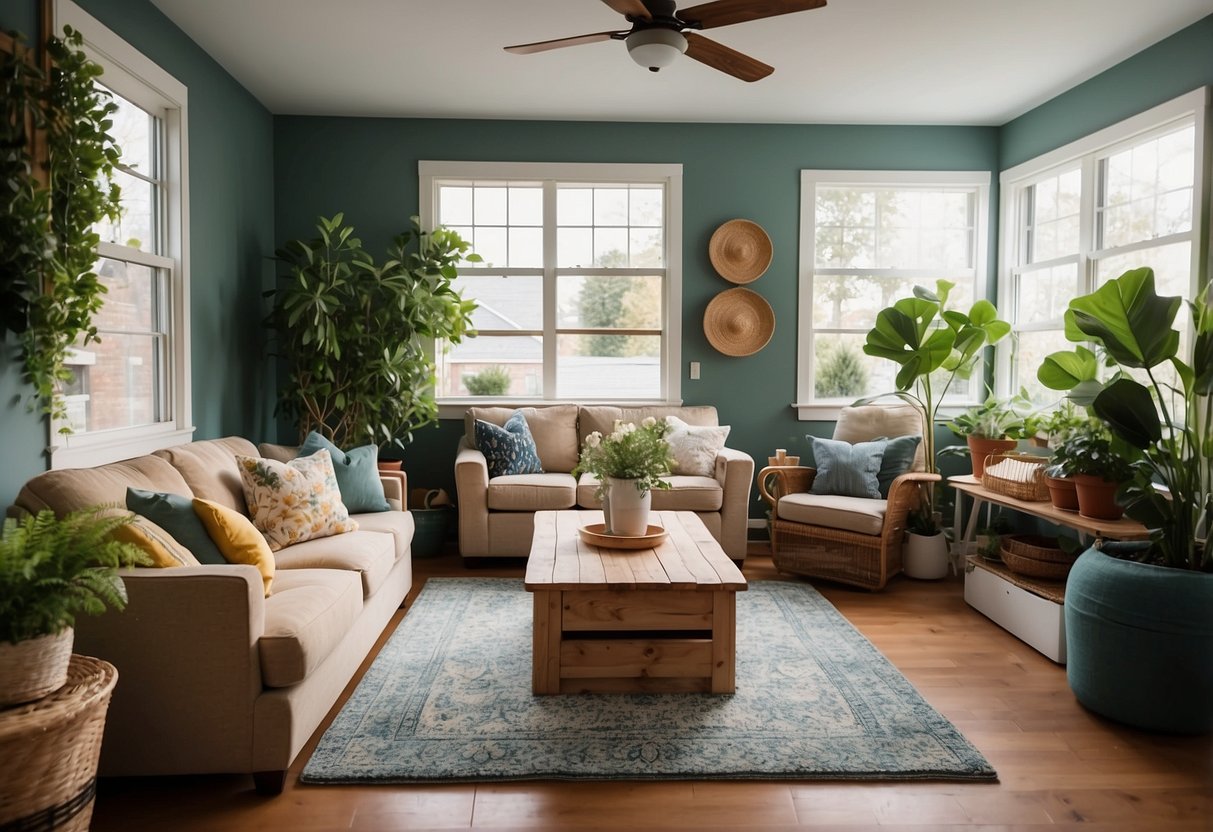
3. Spruce Up the Front Door
A fresh coat of paint can dramatically improve the appearance of your front door. Whether you choose a bold color for a modern look or a classic shade for a timeless appeal, painting your front door is a simple project that can be completed in a few hours.
Updating the door hardware is another impactful way to elevate your front entrance. Opt for matching handles, knockers, and house numbers to create a cohesive look. This change not only enhances the door’s aesthetic but also improves functionality and security.
Adding decorative elements such as a stylish doormat or seasonal wreath brings warmth and character to the entryway. These small touches can transform your front door into a welcoming focal point and can be easily switched out for different seasons or occasions.
Lastly, consider incorporating plants around your front door. Place potted plants or hanging baskets on either side to add a touch of nature and make the entry more inviting. Choose plants suited to your climate and the amount of sunlight the area receives.

4. Replace Cabinet Hardware
Replacing cabinet hardware is a quick and impactful way to update the look of your kitchen or bathroom. By simply swapping out old knobs and handles for new ones, you can give your cabinets a fresh, modern appearance.
First, choose the style and finish that complements your existing decor. Popular options include brushed nickel, matte black, and polished brass. Ensure the new hardware matches the screw spacing of the existing holes to avoid additional drilling.
Next, gather the necessary tools: a screwdriver, screws, and a measuring tape. Carefully remove the old hardware, taking care not to damage the cabinet surfaces. Align and install the new handles or knobs, making sure they are level and secure.
This project can typically be completed in a single afternoon, making it an ideal weekend renovation. It’s an affordable way to make a noticeable difference in your space without requiring extensive skills or equipment.
5. Add Crown Molding
Crown molding is a classic way to enhance the aesthetic appeal of any room. It creates a noticeable transition between walls and ceilings, adding an element of elegance. Even for those with minimal carpentry skills, installing crown molding can be achieved over a weekend.
The first step is to select the type of molding that matches the room’s existing decor. Options range from simple, flat designs to more intricate, detailed patterns. Materials typically include wood, MDF, or polystyrene.
After choosing the molding, precise measurements are essential. Carefully measure the perimeter of the area to ensure you purchase the correct amount. A miter saw is useful for cutting the molding at the correct angles to fit seamlessly in corners.
Once cut to size, secure the molding to the wall using a combination of adhesive and finishing nails. Using a level will help ensure the molding is straight. Fill in any gaps or nail holes with wood filler, and then sand smoothly.
Finally, paint or stain the molding to match or contrast with the room’s color scheme. This last step adds a polished finish, making the room appear more refined and complete.